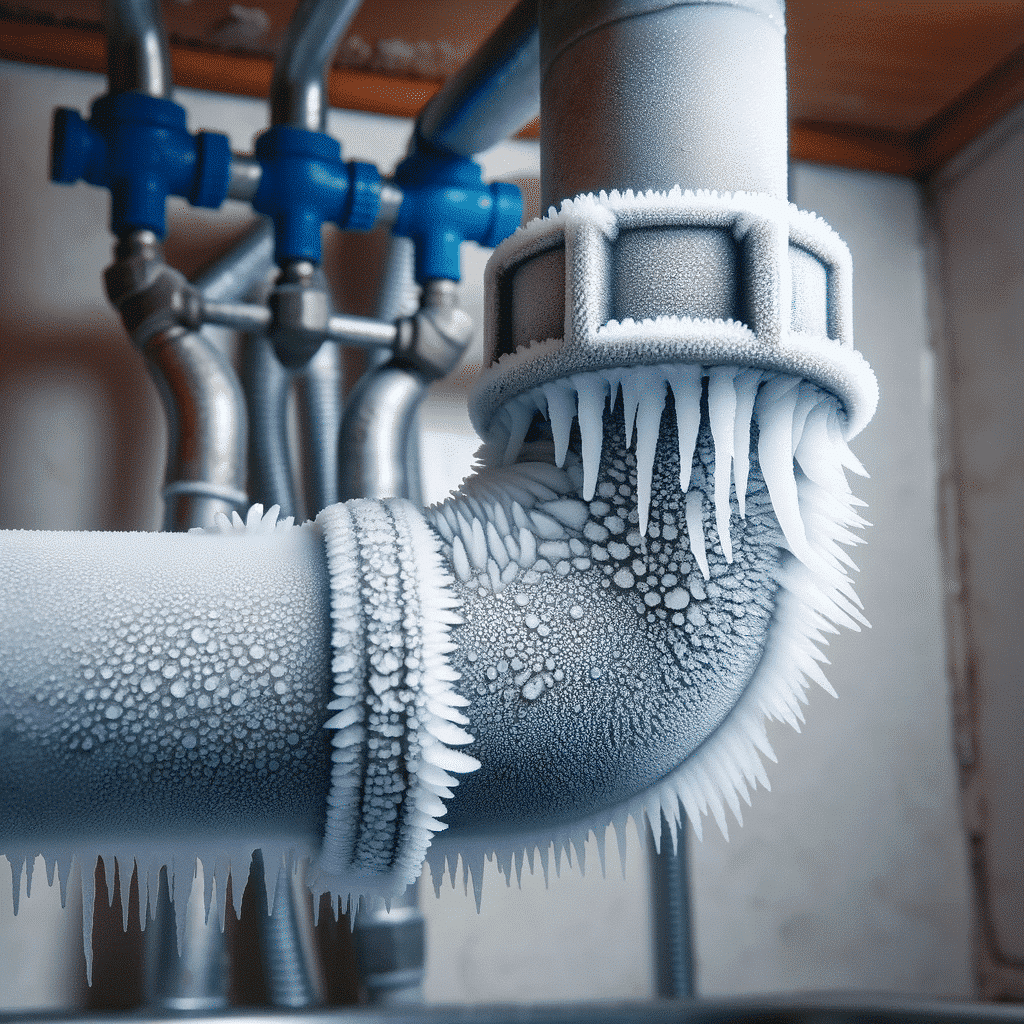Simple Winterizing Tips to Prevent Frozen Pipes (And Unnecessary Costs)
Plumbing Solutions of Idaho expert tips

Winter in Idaho, especially in Boise, can be harsh on your home’s plumbing! If pipes freeze, they can burst, leading to extensive water damage and costly repairs. Taking proactive steps to winterize your plumbing in Boise or your plumbing in Meridian can help prevent emergencies and save you money in the long run.
At Plumbing Solutions of Idaho, we specialize in keeping your plumbing system running smoothly, even in the coldest months. If you experience a plumbing emergency, contact our emergency plumbing team for immediate assistance.
Why Winterizing Your Plumbing Is Essential
Frozen pipes can burst, leading to severe water damage that can cost thousands in repairs. A single burst pipe can release up to 250 gallons of water per day, flooding basements and damaging floors and walls.
Of course, emergency plumbing repairs are far more expensive than routine maintenance. A frozen pipe repair can cost between $500 and $1,500, while water damage restoration from burst pipes can exceed $5,000.
Boise’s frigid temperatures make homes particularly vulnerable to freezing pipes, making winterization a must for local homeowners.
How to Winterize Home Plumbing
1. Inspect and Insulate Pipes
- Check pipes in unheated areas such as basements, crawl spaces, and garages. Pipes exposed to temperatures below 20°F have a high risk of freezing.
- Use pipe insulation or heat tape to keep pipes from freezing. Foam pipe insulation can be purchased at most hardware stores for about $2–$5 per six feet, making it a cheap but effective investment.
2. Drain Outdoor Faucets and Sprinkler Systems
- Disconnect garden hoses from outdoor faucets and store them indoors. Shut off the outdoor water supply valve and drain any remaining water from pipes to prevent freezing.
- If your sprinkler system is not winterized, the buried pipes could crack, leading to costly springtime repairs.
3. Adjust Your Water Heater
- Set your water heater to at least 120°F to ensure a reliable hot water supply throughout winter and prevent bacteria growth.
- Consider insulating your water heater tank and pipes to reduce heat loss, improve efficiency, and lower costs!
4. Seal Cracks and Openings
- Use weather stripping and caulk to close gaps around doors, windows, and foundations to prevent cold drafts that can freeze pipes.
- Insulating drafty areas near pipes can help maintain a stable indoor temperature, reducing the risk of frozen plumbing.
5. Keep the Home Warm
- Maintain a consistent indoor temperature of at least 55°F, even if you’re away for vacation. Open cabinet doors under sinks to allow warm air to circulate around pipes, especially those along exterior walls.
- For extreme cold snaps, let faucets drip slightly to keep water moving and prevent freezing.
Additional Winterization Steps for Your Home
- Shut off and drain water supply lines that won’t be used during winter, such as outdoor plumbing or seasonal vacation homes.
- If you’re leaving your home for an extended period, consider turning off the main water supply and draining pipes completely.
- Let faucets drip slightly in extreme cold to keep water moving and reduce the risk of freezing.
- Use non-toxic RV antifreeze in drains and toilets of unoccupied homes to prevent standing water from freezing.
- Check sump pumps to ensure they are working properly and prevent basement flooding.
Are My Pipes Frozen?
- There’s no water flow when you turn on a faucet.
- There’s visible frost or ice buildup on pipes, especially in basements and crawl spaces.
- Unusual odors are coming from drains due to frozen water blocking airflow.
What to Do if Your Pipes Are Frozen
1. Turn Off the Water Supply
- Locate the main water valve, typically found near the water meter or where the main line enters your home (often in a basement, garage, or utility room).
- Turn the valve clockwise (right) until it stops to shut off the water supply. This will help prevent flooding if the pipe bursts. If you’re unsure where it is, take the time to locate it now before an emergency occurs.
- If you’re unsure where your shut-off valve is, call an emergency plumber for assistance.
2. Safely Thaw Pipes
- Use a hair dryer, heating pad, or warm towels to thaw frozen pipes slowly. (NOTE: Never use open flames, such as a torch or propane heater, as this can cause pipes to burst or create a fire hazard.)
- If multiple pipes are frozen or you can’t access them safely, call an emergency plumbing service immediately.
3. Time to Call a Plumbing Professional?
If pipes remain frozen or burst, contact Plumbing Solutions of Idaho for immediate assistance. Professionals have specialized thawing equipment and can assess whether the pipes need repair or replacement!
Why Choose Plumbing Solutions of Idaho?
- We have over two decades of experience serving Boise and surrounding areas.
- We specialize in winter plumbing maintenance and offer emergency plumbing services.
- We’re exceptional at what we do. Take our customer’s words for it:
- “Plumbing Solutions of Idaho was great. Our main water line broke, they were the only ones to come out same day.” – Subi I.
- “Tom S. was the best plumbing tech that I have ever worked with! He was kind, thorough and above all honest! We highly, highly, highly recommend Plumbing Solutions.” – Jason B.
Ready to Winterize Your Plumbing?
Contact Plumbing Solutions of Idaho today for expert assistance in protecting your home from winter plumbing emergencies. Give us a call or schedule an appointment online!